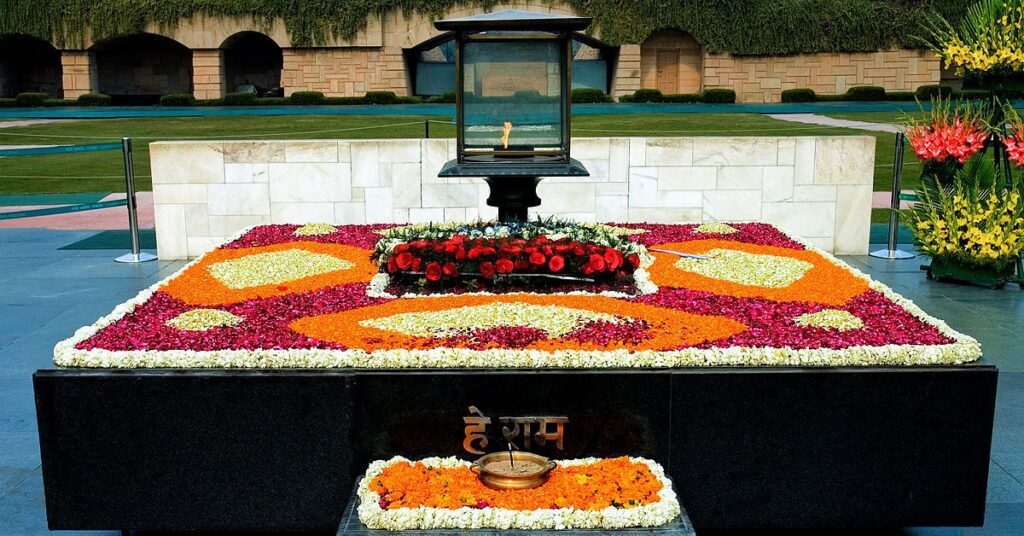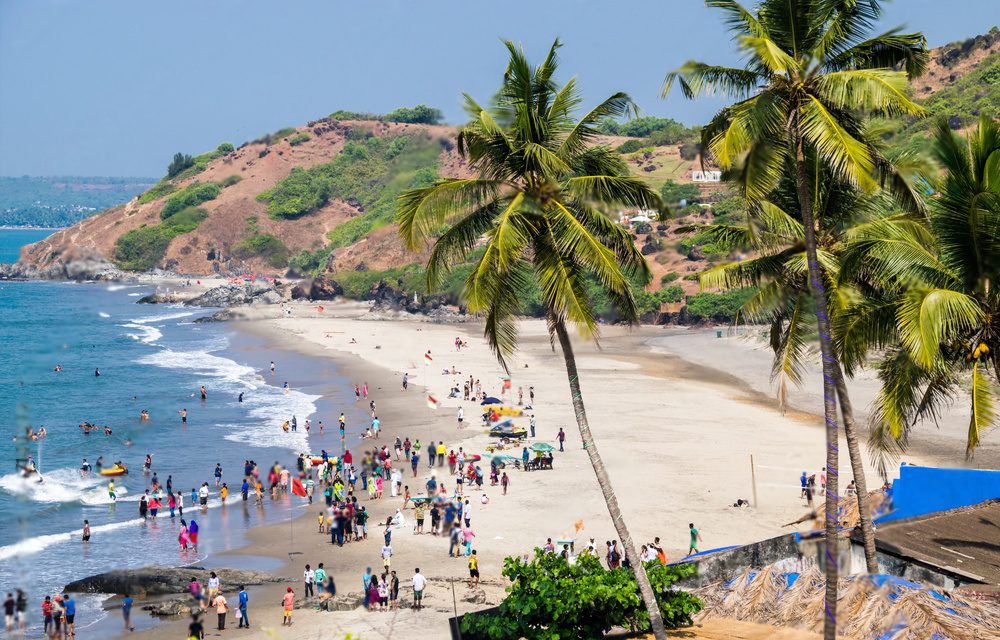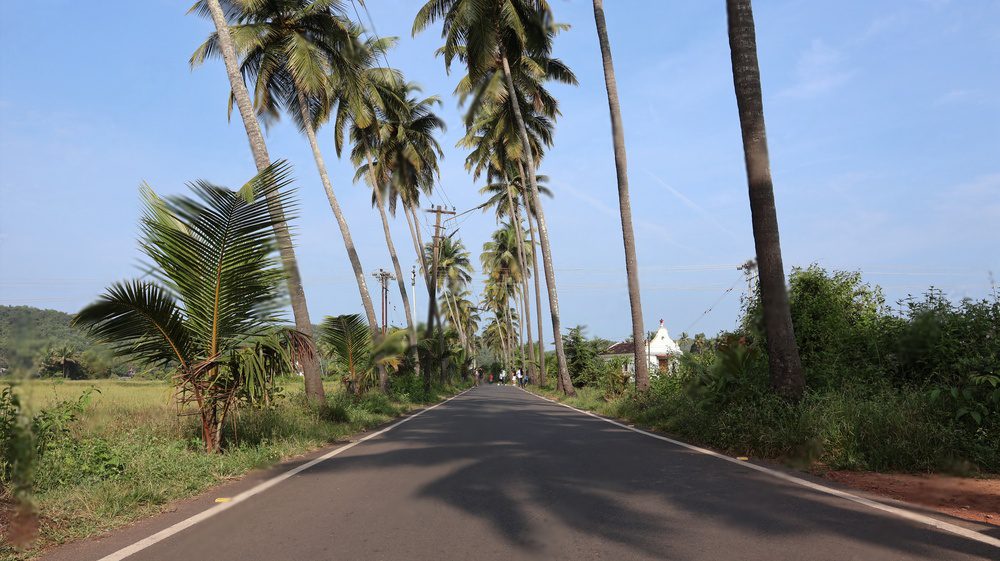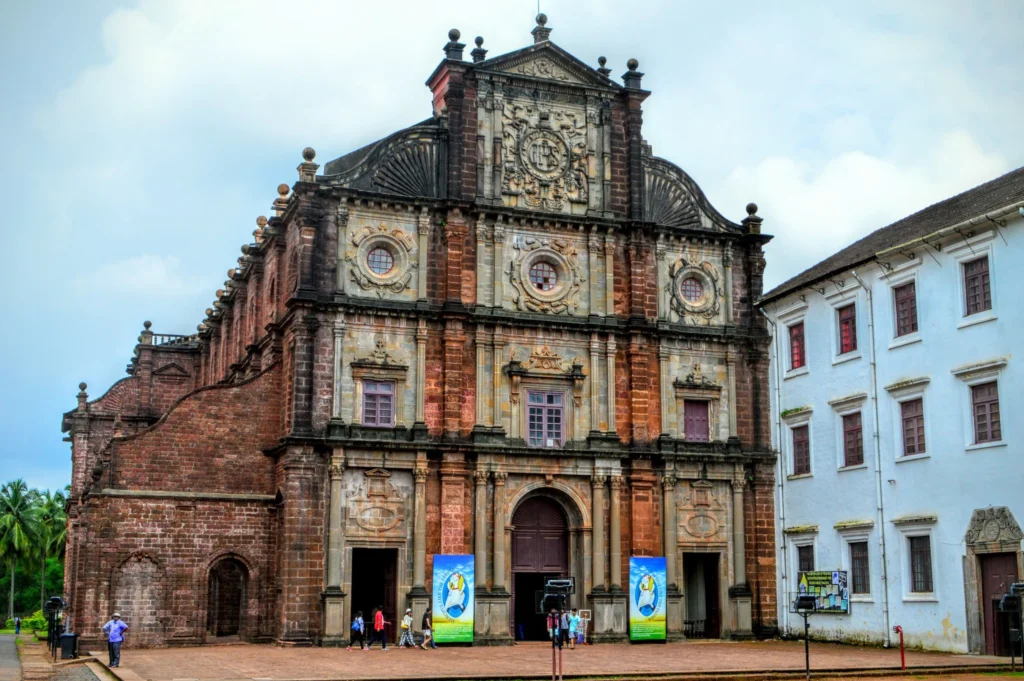Raj Ghat is a special place in Delhi where we remember Mahatma Gandhi, India’s beloved leader. It’s on the banks of the Yamuna River, a quiet and peaceful spot. Gandhiji is buried here, and there’s a simple black stone with a flame that never goes out to honor him. The place is surrounded by beautiful gardens, perfect for thinking and remembering.
People from all over come to Raj Ghat to pay their respects to Gandhiji and learn about his life. He taught us about peace, truth, and fairness, and this place feels like a reflection of his teachings. Whether you’re interested in history or just want a quiet moment, Raj Ghat is a place to visit and feel connected to India’s past.
How to reach:
By Air: The nearest airport is Indira Gandhi International Airport (DEL). From there, take a taxi or rideshare to Raj Ghat, which is about a 30-45 minute drive.
By Metro: The closest metro stations are Rajiv Chowk (Yellow Line) or Kashmere Gate (Blue Line). From either station, take an auto-rickshaw or taxi to Raj Ghat.
By Bus: Delhi Transport Corporation (DTC) buses serve the area. Check local bus routes for options.
By Taxi or Auto-Rickshaw: These are readily available throughout Delhi. Agree on a fare before starting your journey.
By Car: Raj Ghat is accessible by car. There’s parking nearby.
Best time to visit:
Winter (October to March)
This is the most pleasant time to visit Raj Ghat. The weather is cool and comfortable, perfect for spending time outdoors. You can enjoy the serene atmosphere without the discomfort of extreme heat or rain.
Summer (April to June)
Delhi’s summers are scorching hot. While you can visit Raj Ghat, be prepared for high temperatures. Early mornings or late evenings might be slightly more comfortable.
Monsoon (July to September)
The monsoon season brings heavy rainfall to Delhi. The gardens at Raj Ghat look lush and green, but the weather can be unpredictable. If you don’t mind the rain, you can experience a quieter visit.
Attractions:
Gardens and Greenery:
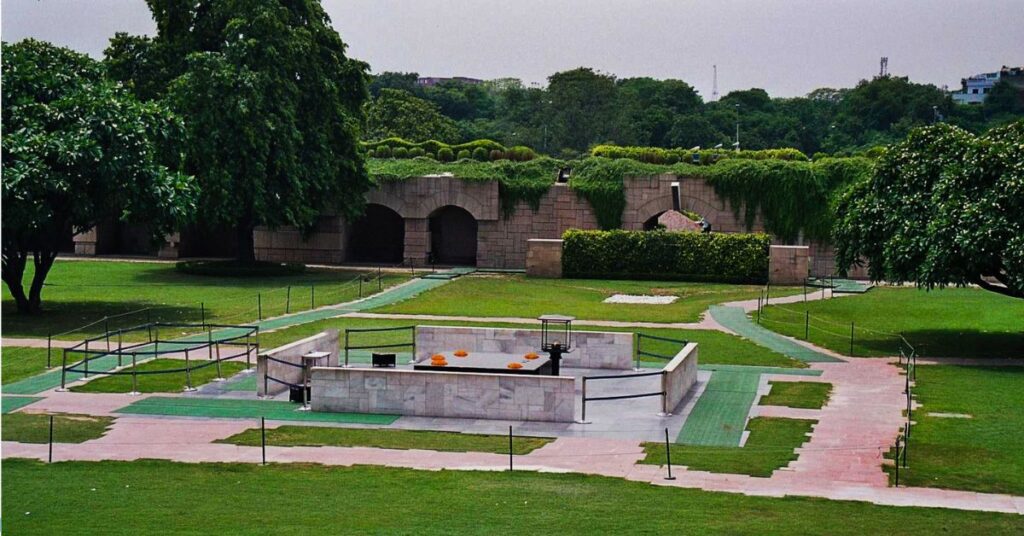

At the heart of Raj Ghat is a plain black stone where Mahatma Gandhi rests. It’s simple, but it’s very powerful. This simple design shows how humble Gandhiji was. A small flame burns there all the time, a symbol of his ideas about peace and truth that will never die. People come here to remember Gandhiji and think about how he changed India and the whole world. It’s not just a place to visit, but a place to feel his spirit and understand his message.
Raj Ghat Museum:
Right next to the memorial is a museum filled with things that belonged to Gandhiji. You can see his photos, clothes, and old papers. It tells the story of his life, from a young lawyer to a leader who changed the world. There are lots of pictures and information about how he fought for India’s freedom and his idea of peaceful protest. It’s a great place to learn more about him and understand his amazing life.


Tribute Stones:
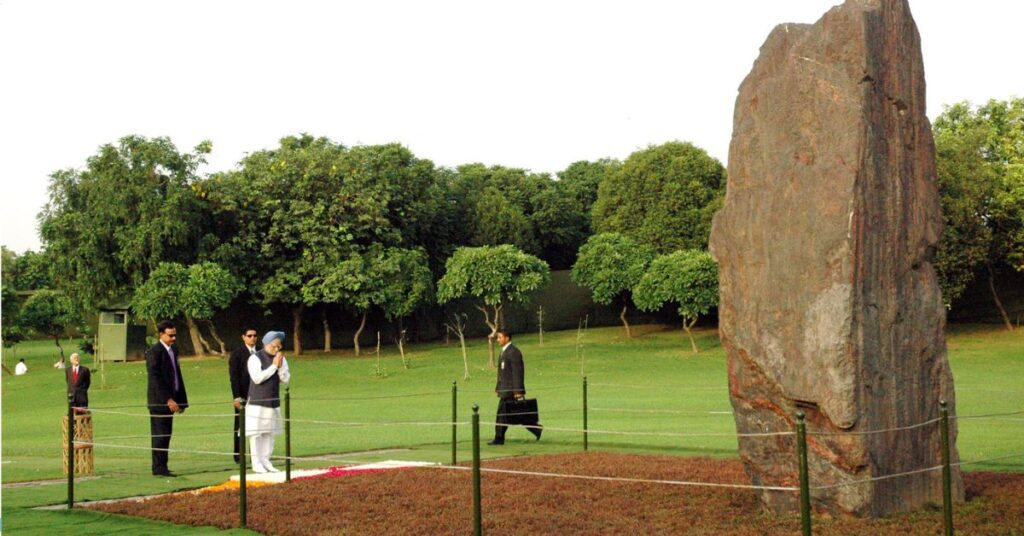

Around the main memorial, you’ll find special stones with messages from important people and world leaders who came to pay respect to Gandhiji. These stones show how much people from all over the world admire Gandhiji and his ideas. They remind us that his message of peace and fairness is still important today. It’s like a history book written in stone, showing how much the world respects Gandhiji.
Reflection Pool:
There’s a beautiful pool of still water near the main memorial. It’s like a mirror for the black stone, making it look even more peaceful. The water is calm and quiet, and it’s a perfect place to sit and think. With the green trees around, it feels very peaceful. Being there helps you think about Gandhiji’s life and what he taught us.
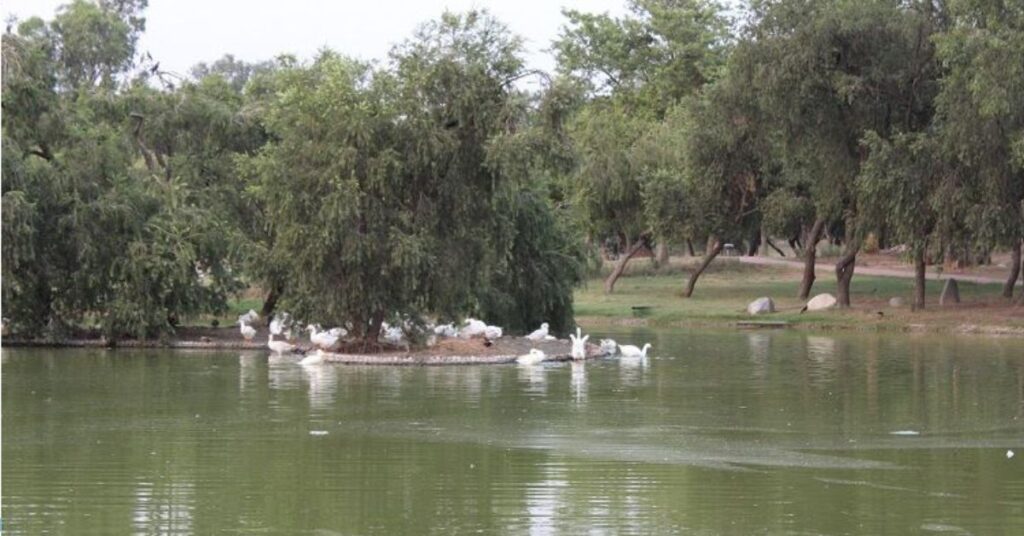

Local Experiences:
- Honor Gandhiji: Pay your respects by laying flowers at the memorial.
- Explore Beyond: Visit nearby historical sites like India Gate, the National Museum, or the Red Fort.
- Celebrate Gandhi Jayanti: Experience special ceremonies on October 2nd to honor Gandhiji’s birthday.
- Find Peace: Enjoy a leisurely walk in the tranquil gardens.
- Learn More: Explore the Raj Ghat Museum to deepen your understanding of Gandhiji’s life.
- Reflect: Find a quiet spot to contemplate Gandhiji’s teachings.
- Discover History: Read the informative plaques about Gandhiji’s life and impact.
- Be Part of the Moment: Participate in special ceremonies or events if they’re happening.
- Connect with Others: Share experiences with fellow visitors.
- Capture Memories: Take photos, respecting the solemn atmosphere.
- Indulge Locally: Explore nearby eateries for delicious Delhi food.
- Continue the Journey: Visit the Gandhi Smriti Museum for more insights into Gandhiji’s life.
Travel tips:
- Dress respectfully: Wear modest clothing as Raj Ghat is a solemn place.
- Bring identification: Carry a valid ID as it might be required.
- Plan your visit: Check the opening hours beforehand to avoid disappointment.
- Stay comfortable: Bring water, especially during warmer months. Visit early morning or late afternoon to avoid the heat.
- Respect the environment: Maintain silence and respect the memorial’s significance. Follow photography rules.
- Transportation and logistics: Consider public transport or taxis due to limited parking. Be prepared for security checks. If you have mobility issues, check accessibility in advance. Carry some cash for small expenses.
- Enhance your visit: Look out for special events or ceremonies for a unique experience.
Conclusion
Raj Ghat stands as a solemn tribute to Mahatma Gandhi, embodying the principles he lived by: peace, non-violence, and humility. This serene memorial invites visitors to reflect on Gandhi’s profound impact on India’s independence and his enduring influence on global movements for justice. The simple yet powerful black marble platform, surrounded by tranquil gardens, creates a space for contemplation. A visit to Raj Ghat offers a unique opportunity to connect with Gandhi’s legacy and understand the values he championed. Explore this historic site and experience the enduring spirit of one of India’s greatest leaders. Plan your visit with our comprehensive guide on Xplro.com.
FAQs
1. What is Raj Ghat?
- Raj Ghat is a memorial dedicated to Mahatma Gandhi, located along the Yamuna River in Delhi. It marks the site where Gandhi was cremated in 1948 following his assassination. The memorial features a simple black marble platform with an eternal flame, set within a tranquil garden.
2. What are the visiting hours for Raj Ghat?
- Raj Ghat is open to visitors daily from 6:00 AM to 6:00 PM. It is closed on certain national holidays like Gandhi Jayanti (October 2), when special commemorative events take place.
3. Is there an entry fee to visit Raj Ghat?
- There is no entry fee to visit Raj Ghat. Access to the memorial and its gardens is free for all visitors.
4. How do I get to Raj Ghat?
- Raj Ghat can be reached via multiple transportation options. The nearest metro station is Kashmere Gate (Blue Line), from which you can take a taxi or auto-rickshaw. It is also accessible by taxi or bus from other parts of Delhi. The closest airport is Indira Gandhi International Airport, approximately 20 kilometers away.
5. Are there any restrictions on taking photographs at Raj Ghat?
- Photography is generally permitted, but visitors should adhere to any specific guidelines or restrictions indicated at the site. Avoid using flash or taking photos in restricted areas to respect the memorial’s solemnity.
6. What type of clothing is appropriate for visiting Raj Ghat?
- Visitors are encouraged to dress modestly and respectfully at Raj Ghat. Comfortable, casual clothing is suitable, but it is advisable to avoid attire that is too revealing or inappropriate for a memorial setting.
7. What facilities are available for visitors at Raj Ghat?
- Raj Ghat provides basic facilities such as clean restrooms and seating areas within the gardens. There are no extensive amenities like food stalls or shops on-site, so bringing water and other essentials is recommended.
8. Is Raj Ghat accessible for visitors with disabilities?
- This place generally offers accessibility for visitors with disabilities, though some areas might have uneven surfaces or steps. It’s a good idea to check in advance for specific accessibility features or assistance available.
9. Are guided tours available at Raj Ghat?
- Raj Ghat does not offer official guided tours. However, visitors can hire private guides or use audio guides available at other major attractions in Delhi to enhance their visit.
10. Is there parking available at Raj Ghat?
- Limited parking is available near Raj Ghat. To avoid parking difficulties and traffic congestion, it is often more convenient to use public transportation or taxis.
11. When is the best time to visit Raj Ghat?
- The optimal time to visit Raj Ghat is during the winter months from October to March, when the weather is cooler and more pleasant. Early mornings or late afternoons are also ideal times to avoid the midday heat and crowds.
12. Are there any special events at Raj Ghat?
- Raj Ghat hosts special ceremonies and events on significant dates, such as Gandhi Jayanti (October 2). These events often include floral tributes and commemorations, providing visitors with a unique and enriching experience.
